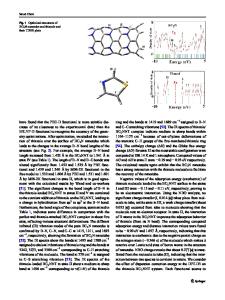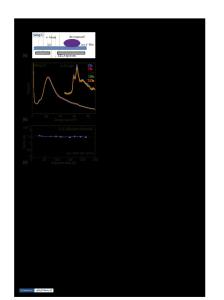DFT Study on the Li Mobility in Li-Ion-Based Solid-State Electrolytes
- PDF / 1,815,075 Bytes
- 6 Pages / 612 x 792 pts (letter) Page_size
- 77 Downloads / 369 Views
DFT Study on the Li Mobility in Li-Ion-Based Solid-State Electrolytes Md Shafiqul Islam, Paul Simanjuntak, Saibal Mitra and Ridwan Sakidja 1 Department of Physics, Astronomy, and Materials Science, Missouri State University, 901 South National Avenue, Springfield, MO 65897, USA. ABSTRACT We have investigated the diffusion mechanisms of Li-ion in amorphous lithium phosphite (LiPO3) with the addition of sulphur. By applying the nudge elastic band (NEB)1 method in crystal LiPO3 and Li3PO4, we have confirmed the ease in diffusion pathways for Li ions in LiPO3 which is quite consistent with the previous theoretical finding. From our diffusion study in 0.5 Li2O- 0.5 P2O5 and 0.4 Li2SO4 – 0.6 (Li2O-P2O5) melts above 3000K investigated with ab-initio molecular dynamics (AIMD) has been confirmed by experiments at lower temperatures, we have demonstrated the benefit of S addition in increasing the Li+ mobility. We have also found that the Li2SO4 addition into the glass result in a characteristic shift in Li-ion vibration to a lower vibrational frequency. In addition, the presence of oxygen surrounding the diffusion pathways appears to be essential in assisting the Li+ mobility in both crystalline and amorphous structures. INTRODUCTION Recently there have been focused interests in developing the solid-state electrolytes (SSEs) in concert with the drive to transform the liquid electrolyte batteries to solid-state lithium batteries (SSLiBs). These solid-state lithium electrolyte (SSEs) can potentially address some of the ageold problems encountered in liquid batteries such as a limited operating voltage, variety of electrochemical safety issues, problems with the chemical compatibility with the electrode materials, a poor cycling property and ionic conductivity in room temperature. A range of SSEs so far have been investigated including LiBH4, Li3N, Li4SiO4, pervoskite, garnet-type LixAyB3yM2O12 (x = 3, 5, 6, 7; y = 0, 1; A=Mg, Ca, Sr,Ba; B = La, Y, Pr, Nd, Sm-Lu; M = Nb, Ta, Sb, Zr, Sn, Te), Li7La2.75Ca0.25Zr1.75Nb0.25O12 ( σ = 2:2×10-4 S/cm), Li2SO4-Li2O-P2O5, Na2O-P2O5, and K2O-P2O5 [2].[3] employ DFT method to solve interfacing between Li anode and garnet type material. There have been several experimental works done to analyze the conductivity and the stability of Li3PO4 and LiPO3, as parts of the promising materials candidates and their corresponding glass compositions e.g. Li2O-P2O5 & xLi2OP2O5-(1-x) Li2O-SO4. There was a report [4] showing the activation energy of 1.4 eV for polycrystalline LiPO3 with dc conductivity of 2.5 × 10-8 S/cm at 280◦ C that can be enhanced by four orders of magnitude by its corresponding glass form. Li2O-P2O5 glass is rich on Li and highly stable in both crystalline and glass xLi2O-(1-x) P2O5 form. The λ Li3PO4 phase is also important because of its thermodynamic stability with Li-based compounds and its characteristic layered structures of the Li ions to facilitate possible Li+ ionic migration. The aim of our study is to understand the transport of Li+ ion at the atomic level in both LiPO3 cry
Data Loading...











